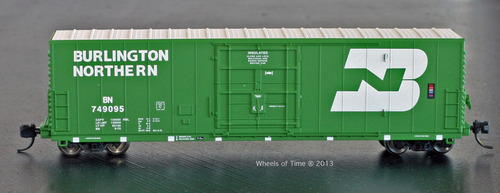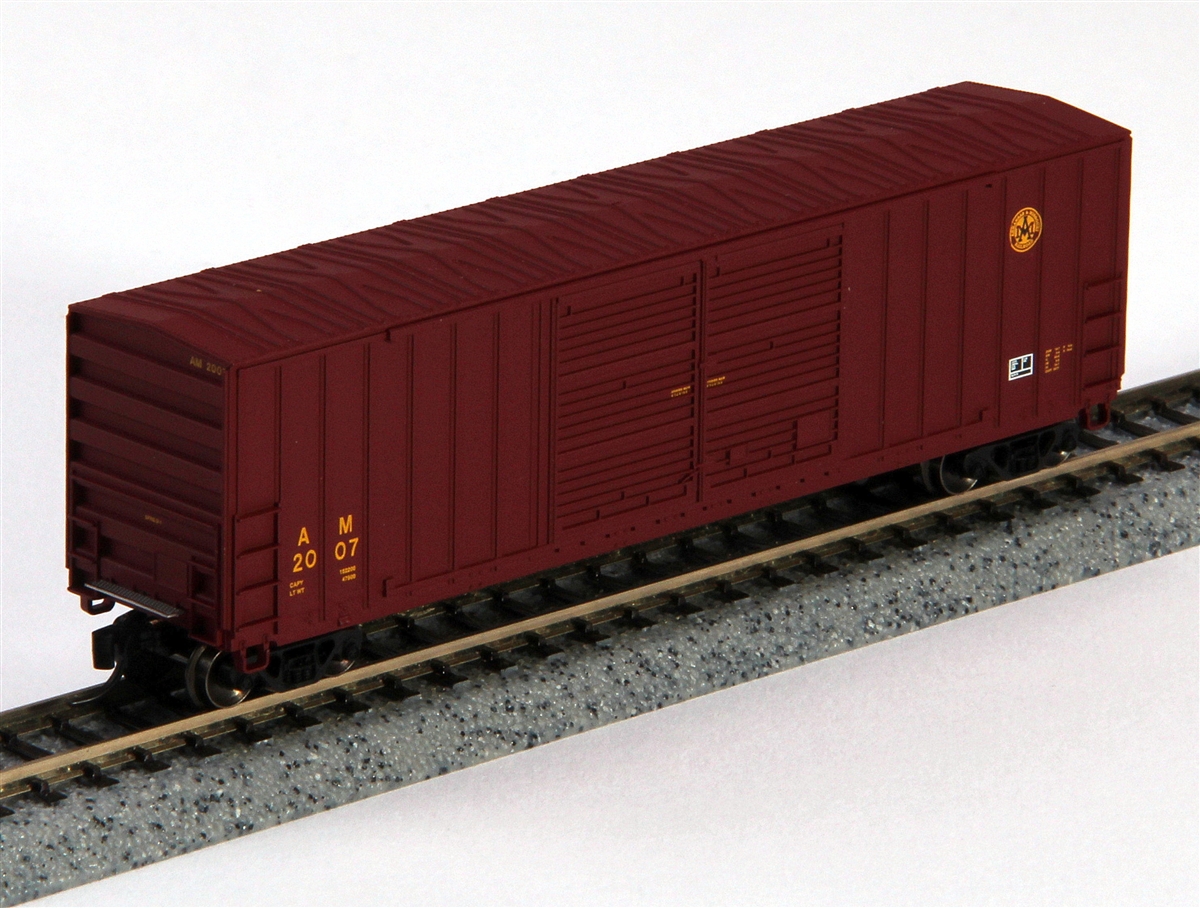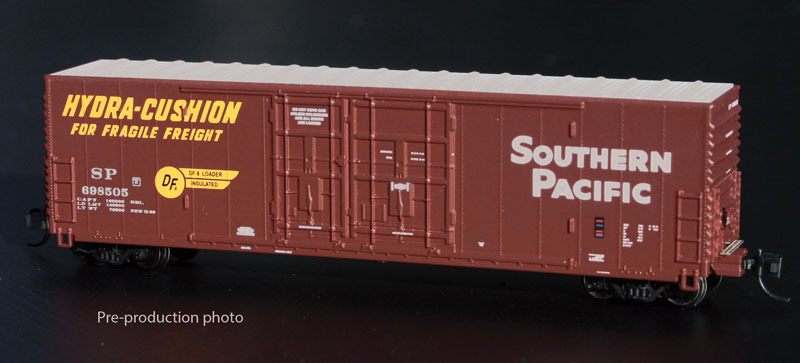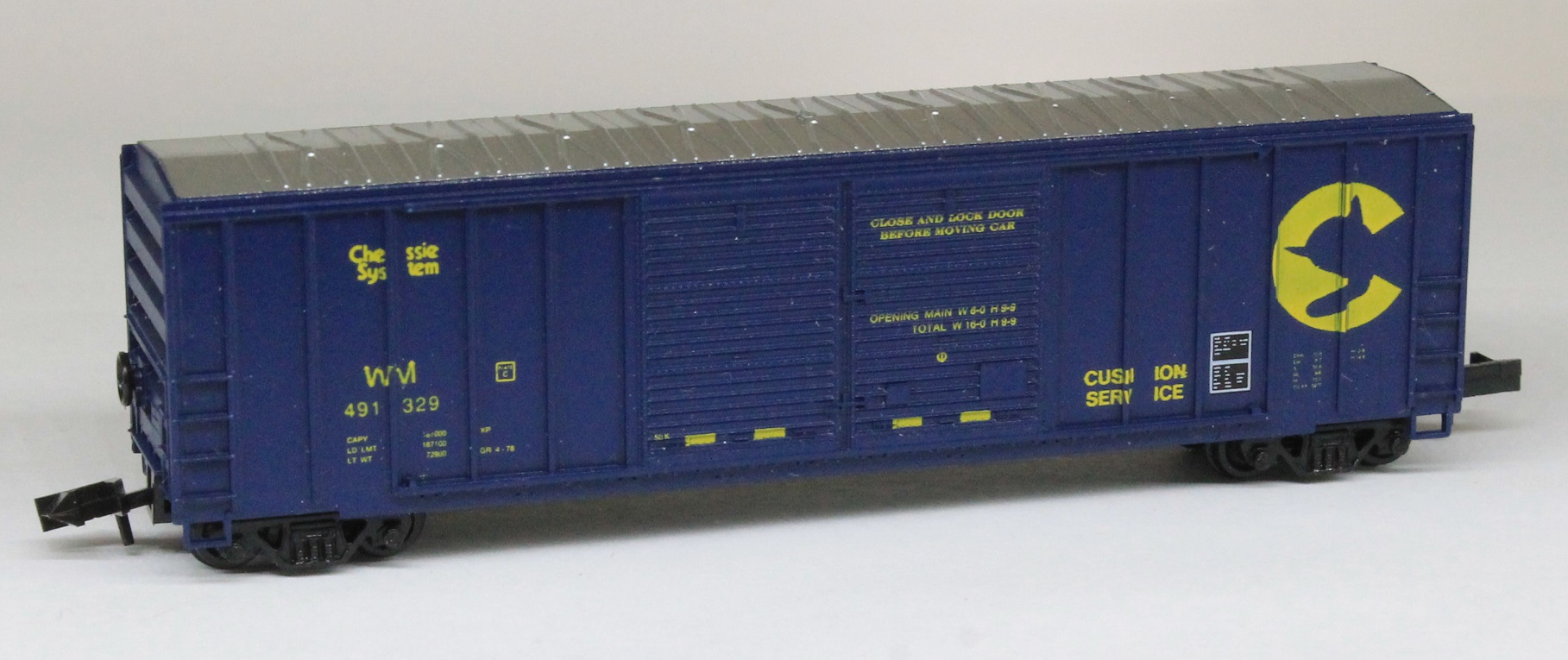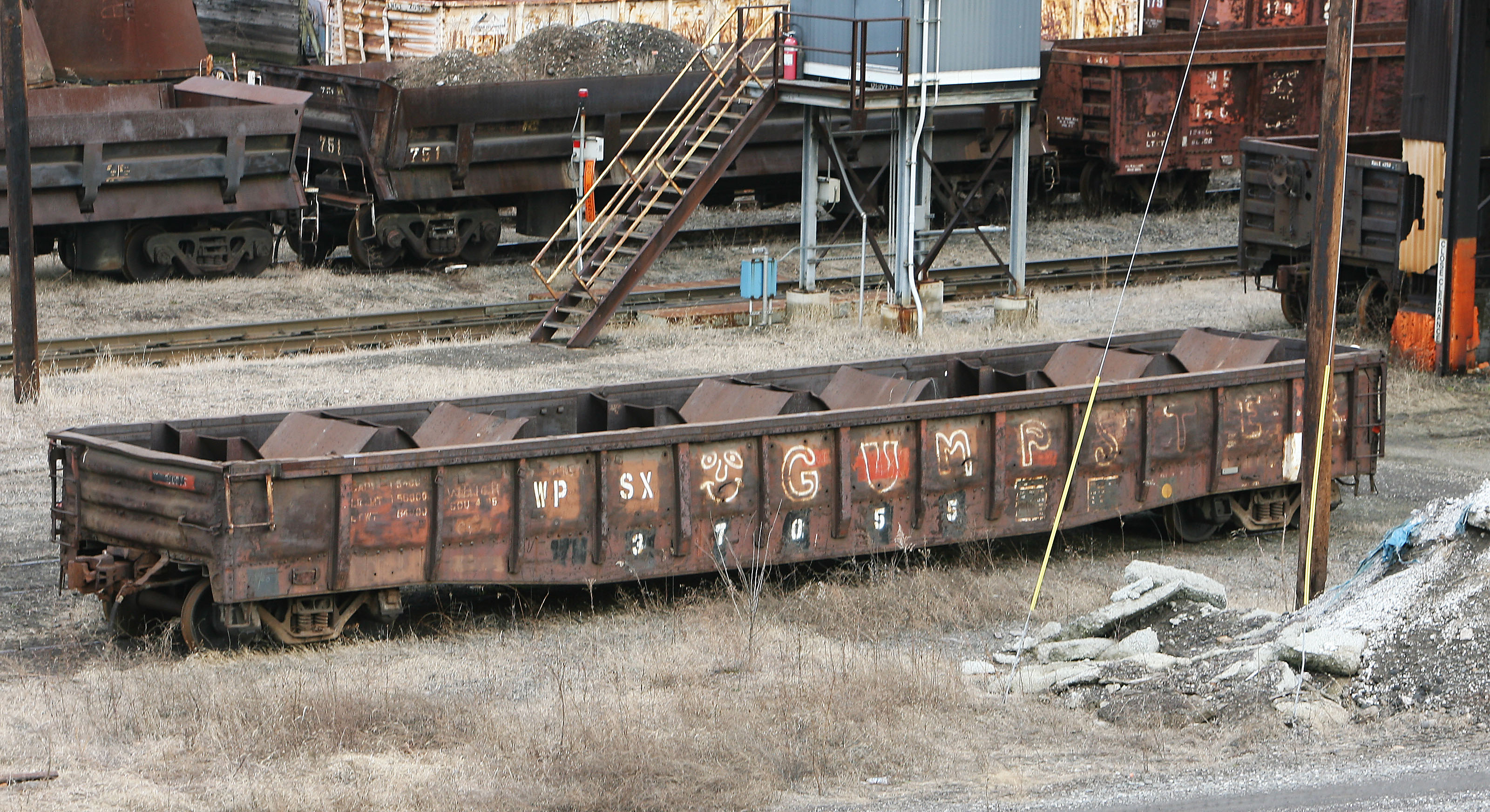Model Information: This model was first announced in 2010, with batch A available in October 2010, and batch B in August 2011. The second release was announced in January of 2015 and made available in late June of 2016.
From the rail up, these N Scale models were engineered to capture the scale fidelity of the prototype. Featuring extremely fine molding, separately applied brake rigging, an etched-metal brake platform and more! Plus, these cars ride on BLMA's NEW 70-Ton Friction Bearing trucks with 33" Metal Wheels featuring a front AND backside wheel profile. If that wasn't enough, check-out the ride height on this model... Just like the prototype!
Features: Ready-To-Run, Injection-Molded Plastic, Fine-Scale Detail, Separate Brake Detail, Chemically Etched Brake Platform, Accurately Painted/Printed, Prototypical Ride Height,BLMA 70-Ton ASF Friction Bearing Trucks, BLMA 33" Scale Profile Metal Wheels, Body-Mounted Brown Knuckle Couplers
From the rail up, these N Scale models were engineered to capture the scale fidelity of the prototype. Featuring extremely fine molding, separately applied brake rigging, an etched-metal brake platform and more! Plus, these cars ride on BLMA's NEW 70-Ton Friction Bearing trucks with 33" Metal Wheels featuring a front AND backside wheel profile. If that wasn't enough, check-out the ride height on this model... Just like the prototype!
Features: Ready-To-Run, Injection-Molded Plastic, Fine-Scale Detail, Separate Brake Detail, Chemically Etched Brake Platform, Accurately Painted/Printed, Prototypical Ride Height,BLMA 70-Ton ASF Friction Bearing Trucks, BLMA 33" Scale Profile Metal Wheels, Body-Mounted Brown Knuckle Couplers
Prototype History: The 52-6 welded 70-ton drop-end gond4ola car as produced by ACF was first produced in 1948 for Pennsylvania Railroad as class G31, PRR alone purchased 11,600 welded cars of this body style in the G31/G31A/G31B/G35, serving the “Standard Railroad of the World” in every corner of North America in many customer applications. Besides PRR, several other railroads also purchased these gondolas from ACF, and some former PRR cars were purchased second-hand by various railroads. Most of these gondolas were phased from revenue service during the 1990s.
Road Name History: 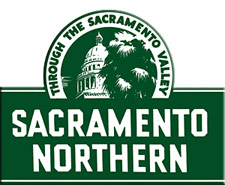 The Sacramento Northern Railway (reporting mark SN) was an 183-mile (295 km) electric interurban railway that connectected Chico in northern California with Oakland via the California capital, Sacramento. In its operation it ran directly on the streets of Oakland, Sacramento, Yuba City, Chico, and Woodland and ran passenger service until 1941 and freight service into the 1960s.
The Sacramento Northern Railway (reporting mark SN) was an 183-mile (295 km) electric interurban railway that connectected Chico in northern California with Oakland via the California capital, Sacramento. In its operation it ran directly on the streets of Oakland, Sacramento, Yuba City, Chico, and Woodland and ran passenger service until 1941 and freight service into the 1960s.
The Sacramento Northern (SN) was an electrified interurban railroad in California that extended 183 miles from Oakland north to Chico. There were two branches, one to Woodland-Colusa, and the other to Oroville. The SN had been two separate interurban companies connecting at Sacramento until 1925. The Oakland, Antioch, and Eastern Railway was a trolley-wire powered line that ran from Oakland through a tunnel in the Oakland hills to Moraga, Walnut Creek, Concord, Pittsburg, to Sacramento. It was renamed the San Francisco-Sacramento Railroad briefly. The Northern Electric Railway was a third-rail powered line that ran from Sacramento north through Marysville-Yuba City to Chico. The train crossed the Sacramento River on the Red Gate Bridge. It was renamed the Sacramento Northern Railroad in 1914. In 1928, the two lines combined to become the Sacramento Northern Railway and came under control of the Western Pacific Railroad which operated it as a separate entity. An extensive multiple-car passenger service operated from Oakland to Chico until 1941 including providing dining car service on some trains. Passenger traffic was heaviest from Sacramento to Oakland. Freight operation using electric locomotives continued into the 1960s. The SN was a typical interurban in that its trains, including freight, ran on downtown city streets in Oakland, Sacramento, Yuba City, and Woodland. This involved multiple car trains making sharp turns at street corners and obeying traffic signals. Once in open country, SN's passenger trains ran at fairly fast speeds. With its shorter route and lower fares, the SN provided strong competition to the Southern Pacific and Western Pacific railroads for passenger business and minor freight business between those two cities. North of Sacramento, rail business was less due to the small town agricultural nature of the region with is small towns and by competition from the SP Railroad.
From Wikipedia

The Sacramento Northern (SN) was an electrified interurban railroad in California that extended 183 miles from Oakland north to Chico. There were two branches, one to Woodland-Colusa, and the other to Oroville. The SN had been two separate interurban companies connecting at Sacramento until 1925. The Oakland, Antioch, and Eastern Railway was a trolley-wire powered line that ran from Oakland through a tunnel in the Oakland hills to Moraga, Walnut Creek, Concord, Pittsburg, to Sacramento. It was renamed the San Francisco-Sacramento Railroad briefly. The Northern Electric Railway was a third-rail powered line that ran from Sacramento north through Marysville-Yuba City to Chico. The train crossed the Sacramento River on the Red Gate Bridge. It was renamed the Sacramento Northern Railroad in 1914. In 1928, the two lines combined to become the Sacramento Northern Railway and came under control of the Western Pacific Railroad which operated it as a separate entity. An extensive multiple-car passenger service operated from Oakland to Chico until 1941 including providing dining car service on some trains. Passenger traffic was heaviest from Sacramento to Oakland. Freight operation using electric locomotives continued into the 1960s. The SN was a typical interurban in that its trains, including freight, ran on downtown city streets in Oakland, Sacramento, Yuba City, and Woodland. This involved multiple car trains making sharp turns at street corners and obeying traffic signals. Once in open country, SN's passenger trains ran at fairly fast speeds. With its shorter route and lower fares, the SN provided strong competition to the Southern Pacific and Western Pacific railroads for passenger business and minor freight business between those two cities. North of Sacramento, rail business was less due to the small town agricultural nature of the region with is small towns and by competition from the SP Railroad.
From Wikipedia
Brand/Importer Information: BLMA Models was founded in July of 2000 to bring Z, N, and HO Scale products of superior quality and originality to the model train community. At BLMA Models, we understand that quality and accuracy count in producing realistic scale models. Our passion revolves around accuracy, diversity, innovation and satisfaction to prototype model railroaders by providing exceptional products and service that goes beyond your expectations.
BLMA was acquired by Atlas Model Railroad in January of 2016.
BLMA was acquired by Atlas Model Railroad in January of 2016.
Item created by: gdm on 2016-06-27 06:22:32. Last edited by gdm on 2022-03-14 14:49:38
If you see errors or missing data in this entry, please feel free to log in and edit it. Anyone with a Gmail account can log in instantly.
If you see errors or missing data in this entry, please feel free to log in and edit it. Anyone with a Gmail account can log in instantly.





